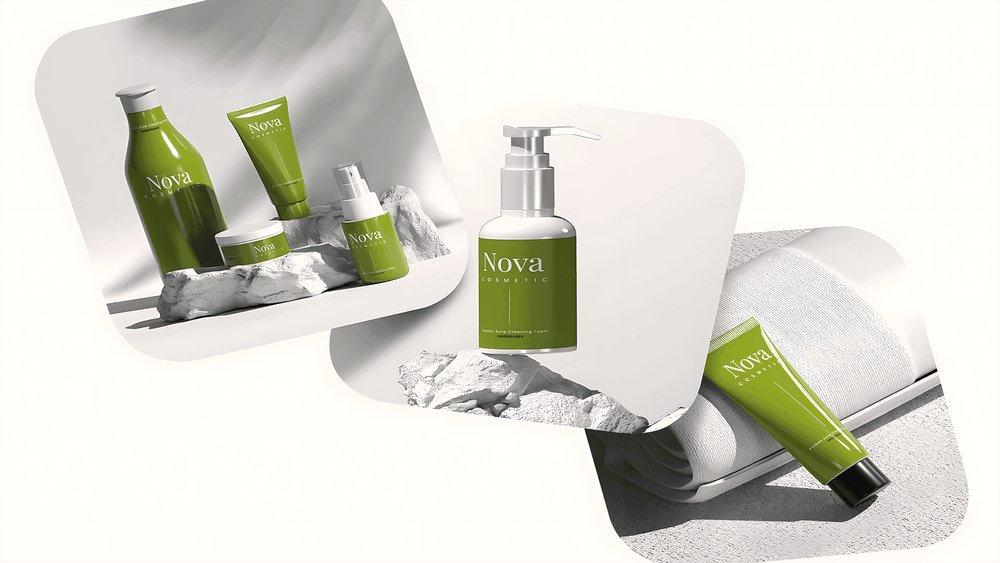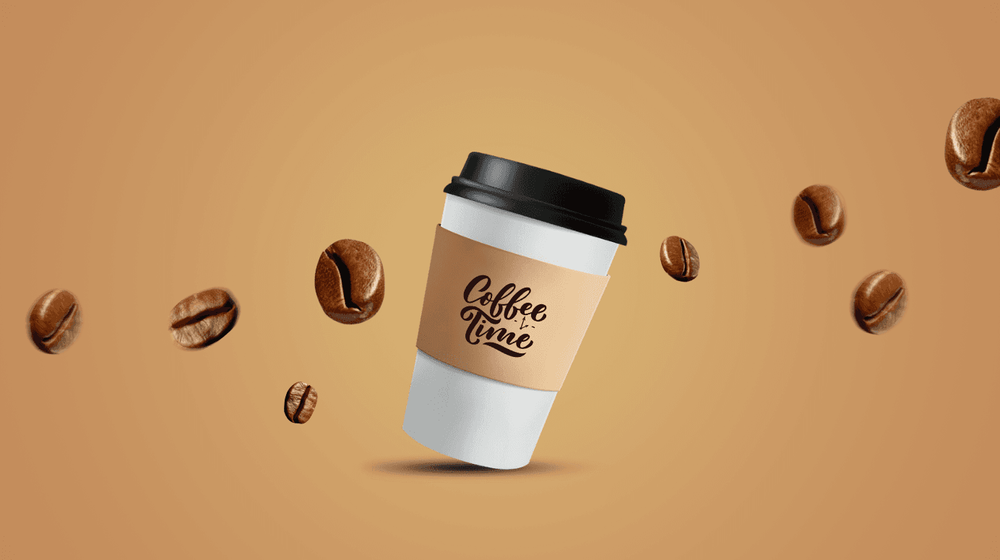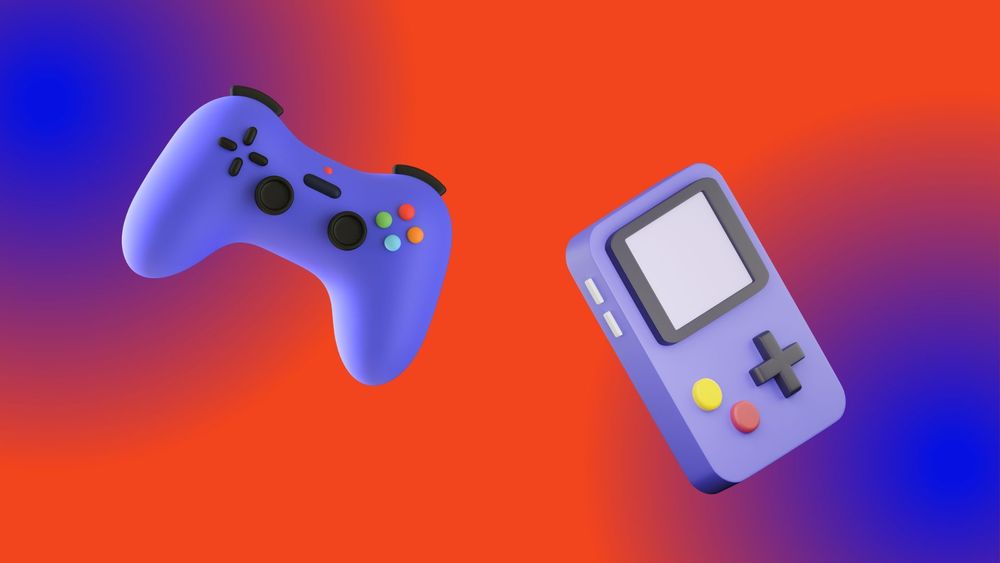Crafting a memorable brand identity can feel like both an art and a science.
Just think about the last time you recognized a global brand purely by its logo, colors, or even a specific font style. It happens more often than we realize, doesn't it?
Take a stroll down your local high street or browse through social media feeds, and you'll notice the power of a well-constructed brand kit in action.
Companies like Netflix, Slack, and Yelp have undeniably perfected this, creating recognizable brand identity elements that are instantly recognizable. But how did they achieve such a cohesive and impactful visual identity?
The secret lies in a thoughtfully designed brand kit. In this article, we'll dive deep into ten exemplary brand kits from well-known companies, extracting valuable lessons that can help you shape a compelling brand story for your own business.
What Is a Brand Kit?
A brand kit, also known as a brand style guide or a brand book, is a set of guidelines that outlines the visual elements and messaging that represent a company's brand. It serves as a reference for maintaining consistency across all marketing and branding materials.
A good brand kit typically includes logo, color palette, typography, imagery style, tone of voice, and other brand elements.
- Logo: The logo design is the visual representation of a brand and should be easily recognizable and memorable. It should also be scalable, meaning it can be resized without losing its quality.
- Color Palette: Colors evoke emotions and can influence how people perceive a brand. A brand kit specifies the primary colors and variations that should be used in all marketing materials.
- Typography: Typeface choice plays an essential role in creating a cohesive brand identity. A brand kit outlines the specific fonts and styles to use for headings, body text, and other messaging.
- Imagery Style: The style of images used in branding materials should align with the overall tone of the brand. A brand kit may include guidelines for image composition, color filters, or usage of specific types of photography or illustrations.
- Tone of Voice: The way a brand communicates with its audience is just as important as visual elements. A brand kit defines the tone and language to use in all marketing materials, from social media posts to website copy.
- Icons: These small graphical elements can add personality and consistency to a brand's visual identity. A brand kit may include guidelines for icon design, color usage, and placement. —> BROWSE AND DOWNLOAD ICONS FOR YOUR BUSINESS

- Characters or mascots: Some brands use characters or mascots to represent their brand and add a human element. A brand kit may include guidelines for designing these characters, including their personality traits and how they should be used in branding materials. —> CUSTOMIZE A CHARACTER FOR YOUR BRAND NOW
10 Brand Kit Examples Across Different Industries
1. TEDx
TEDx is like a smaller version of the main TED conference, organized by local people. They have a branding kit to keep the look and feel similar to TED, but with some local touches. The kit has different logo options, mainly featuring the TEDx logo with an 'x' to show it's an independent event. There are rules on how to add the name of the local event, like TEDxBelgium.
The main colors are TED Red and charcoal gray, but organizers can use other colors that fit their event, as long as they stick to the TEDx style.

2. Hulu
If you watch movies or shows on Hulu, you're familiar with their bright green and black colors. Their branding guide is over 100 pages long and covers everything about Hulu's look and feel, including trademarks, visual elements, colors, and fonts.
Hulu aims to provide a clear and efficient browsing experience, and these details are included in the product design section. Like many brand guides, it features various logos and icons. There are also a part about the tone of voice for marketers and a section on campaigns, including cultural campaigns.

2. Yelp
Yelp has a brand guide called the Cookbook. It's like a cookbook with ingredients and recipes for creating their brand look.
The guide shows how to use Yelp’s colors and fonts. When you look at Yelp, you can see how well their red and blue colors match and how easy their fonts are to read.
The "recipes" in the guide include instructions for making things like alerts, ratings, and buttons. Yelp also shares their design principles, explaining that they want their product to be easy to use and helpful for visitors.

3. Slack
Slack brand kit guideline can be found in Slack brand center. The brand kit is designed to help people use and learn more about Slack's brand elements, including colors, logos, icons, typography.
Slack has a playful yet professional tone of voice which is reflected in their visual branding as well. They use bright and bold colors like green, purple, and orange to create a brand kit with an energetic and dynamic feel. Their font is modern and easy to read.
The brand kit also includes guidelines for using emojis and illustrations in a consistent manner. This adds to the overall fun and approachable tone of Slack's brand.

4. Medium
Medium strives to offer beautiful and user-friendly reading and writing experiences. As you explore the platform, you'll notice their brand kit in action.
If you want to use Medium as an example, check out their updated brand kit. The old kit is still available, so you can compare both and see why Medium rebranded.
This kit explains the differences between their logo, wordmark, and symbol. Like other brands, Medium shows how much space to leave around the logo. They also explain how to use the symbol alone and provide guidelines for using these brand elements. Additionally, the company offers tips on using white or black text on colored backgrounds.

5. Shopify
Shopify's brand kit explains how to use its brand assets correctly. For instance, it shows how to display the logo on white or black backgrounds. Since colors aren't always available, they provide monotone logos and explain when to use them.
The kit also shows the amount of clear space needed around the logo and wordmark and provides guidelines for using the logo in digital and print formats.
Like Netflix, Shopify explains how not to use the logo and wordmark and includes trademark usage guidelines.
You don't need to know all the details when using Shopify's brand kit for inspiration, but it can help you decide what to include in your own kit.

6. Airbnb
Airbnb's brand kit is all about being inclusive and welcoming. This aligns well with their brand as a global community marketplace for unique accommodations and experiences.
Their guidelines include examples of how to use the logo in different situations, such as on dark backgrounds or alongside other logos. They also provide color palettes and typography guidelines.
One interesting aspect of Airbnb's brand kit is their focus on photography. As a platform that relies heavily on visual content, Airbnb emphasizes the importance of visual assets using high-quality, diverse, and authentic images in line with their brand values.
Overall, Airbnb's brand kit showcases the importance of consistency and inclusivity in building a strong and recognizable brand image.

7. Starbucks
Starbucks's brand guidelines are a testament to its commitment to creating not just a coffeehouse, but a global community hub.
With a blend of modernity and tradition, the guidelines prioritize consistency across all customer interactions.
The iconic green and white color scheme, paired with the familiar Siren logo, instantly evokes a sense of comfort and quality. Typography is carefully chosen to convey approachability and sophistication, reflecting Starbucks's dedication to craftsmanship.
From store design to digital platforms, every detail is meticulously crafted to enhance the customer experience. Whether through its renowned coffee blends or community initiatives, Starbucks strives to create a space where people can come together, connect, and feel at home.

8. Netflix
The core of their brand kit is the iconic red logo, available in both the full wordmark and a simplified "N" symbol. They offer clear guidelines for logo usage, emphasizing proper spacing, color combinations for high visibility, and maintaining the brand logo's integrity by avoiding distortions.
While specific details on fonts and colors might not be readily available, Netflix's overall brand identity shines through their website and marketing materials. A focus on clean lines, red accents, and high-quality visuals reinforces their image as a premium streaming platform.

9. Spotify
The Spotify brand kit is one of the best brand kit examples that provides a clear design guide. It explains how to use their logo and which colors are allowed.
In the kit, Spotify mentions that you should use their icon, a simpler version of their logo, only when there isn't enough space for the full logo.
The kit also includes important details like the smallest size the logo can be, the typeface and backup fonts to use, and the background colors that are okay for their visual elements.
Not many brand kits offer as much detailed info as the Spotify brand kit on using brand elements across different platforms and materials.

10. Amazon
Amazon’s brand kit is a guide for how others should use its logo, icons, colors, and other brand elements. It gives clear rules on spacing around the logo, minimum size, capitalization, punctuation, etc.
It also strictly says not to change the logo's design, shape, or color. The kit includes many pictures showing how not to use the Amazon logo. Additionally, it provides rules for using Amazon's product images in ads.
Since Amazon is a marketplace with many small brands mentioning it on their sites, the brand kit also explains what these third-party sellers can and cannot do with the Amazon logo on their websites.

Why Is Having a Brand Kit Important?
Having a clear and cohesive brand identity is crucial for any business looking to establish itself in the market. A strong and consistent brand identity can differentiate your products or services from competitors and build trust with consumers.
A comprehensive brand kit ensures that every aspect of your company's brand assets – from logo design and color scheme to tone of voice and typography – is consistent across all channels. This consistency helps consumers recognize and remember your brand, making it easier for them to connect with your business.
Get Your Branding Mockup Kit Today!
Pixcap's branding mockup kits are designed to help you visualize and implement all your brand assets and elements effectively.
With our easy-to-use templates, you can create professional mockups of your logo, color scheme, typography, and other visual elements across different platforms and materials.
Don't wait any longer – get your branding mockup kit today and start building a strong and recognizable brand for your business!
Try Bags 3D Mockup Essential Branding Mockup Kit

Try iPhone 3D Mockup Essential Branding Mockup Kit

Try Tablet 3D Mockup Essential Branding Brand Kit

Try Stickers 3D Mockup Essential Branding Mockup Kit

Conclusion
A well-crafted brand kit is integral to establishing a memorable and cohesive brand identity. It ensures that every element of your branding—be it your logo, typography, color scheme, or tone of voice—remains uniform across all platforms, enhancing brand recognition and consumer trust.
By drawing inspiration from the detailed examples provided, you can get creative and design your own brand kit that reflects your unique brand personality.
We encourage you to take the leap and start crafting your brand kit today. Whether you utilize the provided templates or mix and match elements that best represent your brand, the journey is both challenging and rewarding.




